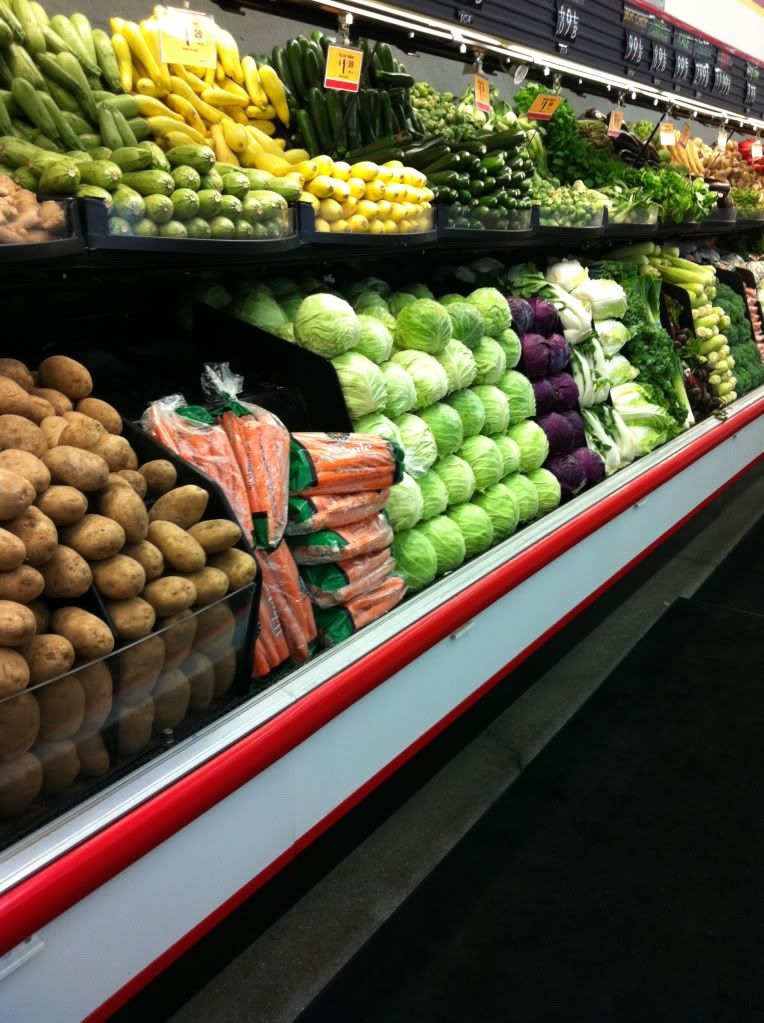Here, the produce section is very large, with a wide variety of foods from which to choose. This was exciting, and at first it was very satisfying.
Product of "Far, Far Away"
 However, few things caught my eye. The first was the location of production. In the readings I’ve been doing, they mention that we should try to purchase foods locally – hence the farmers’ market being my first choice. As I browsed the foods, it became clear that these foods were not produced locally. Many were labeled as a “Product of Mexico” or other countries. Even the ones that were labeled as a product of the USA were just labeled that – “Product of USA”. The states were not listed, the cities were not listed – not even the regions were listed. In contrast, at a farmers’ market you can be sure the foods are being produced nearby. This means that they have not been shipped across several states, wasting gas and taking days to get to the store.
However, few things caught my eye. The first was the location of production. In the readings I’ve been doing, they mention that we should try to purchase foods locally – hence the farmers’ market being my first choice. As I browsed the foods, it became clear that these foods were not produced locally. Many were labeled as a “Product of Mexico” or other countries. Even the ones that were labeled as a product of the USA were just labeled that – “Product of USA”. The states were not listed, the cities were not listed – not even the regions were listed. In contrast, at a farmers’ market you can be sure the foods are being produced nearby. This means that they have not been shipped across several states, wasting gas and taking days to get to the store.When Seasons Don't Matter
 I accepted that the foods were probably not locally grown, and continued my search. The next thing I became aware of was the wide variety of foods. It does not take an expert to realize that all fruits are not in season all the time. It had never occurred to me before, but I realized I was looking at the same kinds of fruits that had been there all year. Plums, pears, grapes… After a quick online search, I learned that pears were not technically in season during the summer. These pears, if grown naturally, would not be sitting in a grocery store today. Someone did something to the pears to make them different. They are not pears as a traditional farmer (or consumer) would see them.
I accepted that the foods were probably not locally grown, and continued my search. The next thing I became aware of was the wide variety of foods. It does not take an expert to realize that all fruits are not in season all the time. It had never occurred to me before, but I realized I was looking at the same kinds of fruits that had been there all year. Plums, pears, grapes… After a quick online search, I learned that pears were not technically in season during the summer. These pears, if grown naturally, would not be sitting in a grocery store today. Someone did something to the pears to make them different. They are not pears as a traditional farmer (or consumer) would see them.Just a Produce Messenger
It was after these two realizations that a man who worked in the produce section came out. We began talking about the foods they offer and he gave me even more things to be upset about. For example, the workers do not get to decide where the foods come from. Although it might sound obvious, these men and woman are with the fruits and vegetables all day but they have no role in deciding whether the store should offer more foods from California, or even the United States.
Later, I asked him how often he has to throw away fruits or vegetables that do not look servable to a customer. Surprisingly, he said he rarely has to do this. The foods that come in look almost identical to one another, so he simply washes them and stacks them for the customer. Looking around, I realized he was right. The plums all looked the same. The only choice a customer really has is whether they want a squishy plum or a firm plum. It was the same with the others.
Grateful or Sad?
So how should I evaluate my experience? On one hand, I am grateful stores are providing a large selection of fruits and vegetables. On the other hand, it is sad to see that foods have been made to be in season all year long and have been made to look exactly like each other, only for the simple fact that they are not natural. Is it wise to play with nature that way?
The biggest disappointment was that the people in my city do not have easy access to fresh, local fruits and vegetables.
